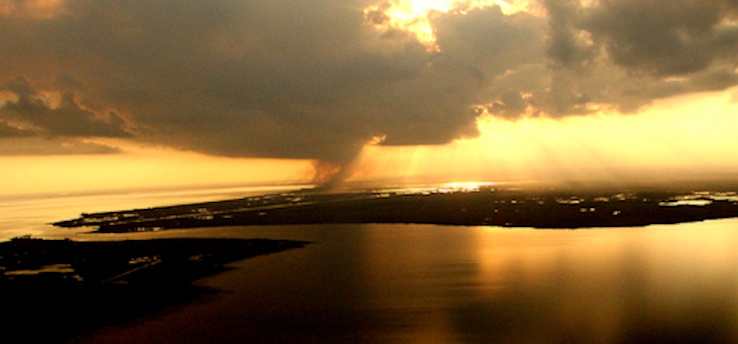Article and Photo by Monique Verdin
People keep asking me how I got involved with Cry You One. The journey deserves its own chapter really as it has been an unimaginable story involving a magical series of critical connections and unexpected sideswipes. I feel like the Loup Garou formally introduced me to this project after Nick Slie almost ran me over on his bicycle in the spring of 2008. Then a few weeks later, I met writer Raymond “Moose” Jackson for the first time when he unexpectedly showed up at the annual boat blessing down Bayou Pointe aux Chenes (Point of the Oaks) and we ended the day watching the sunset where my ancestors’ bones remain. Looking back, those moments are all just starting to make sense now, as I find myself running, singing, dancing, laughing and crying alongside the skeleton cypress marking the forgotten ancient forest, in the Bayou Terre aux Boeufs (Land of Bison) back swamps of St. Bernard Parish.
I live 20 miles from the back of the French Quarter, along the banks of the dying Bayou Terre aux Boeufs, just down the road from the Los Islenos Museum where the CRY YOU ONE – M.O.S.Q.U.I.T.O. experience begins. This part of the country has been in a state of uncertain recovery ever since Hurricane Katrina’s storm surge, back in 2005, washed in after crumbling federal levees. We thought we had a crisis on our hands with sinking sediment and rising sea levels, but in 2010, the BP Drilling Disaster pushed the black tide in.
For years now, I have been having conversations with my collaborators trying to make sense of south Louisiana’s global reflection of unfathomable modern madness and the cycles of environmental injustice. I, like many, question if we will be able to continue our way of life here in the Mississippi Delta, as we are losing our land to the sea. There is talk of “master plans” and visions of what an unprecedented delta restoration could be and promise of money coming from BP. But the realities of communities outside levee protection are in a state of wait and see. Some are elevating houses 20 feet into the sky to be “Closer to Heaven,” to be “High and Dry.” Due to circumstance, some have already left or will eventually be forced to leave in search of higher ground. That is almost certain, whether temporarily or forever.
Cry You One questions what happens to culture when you lose the land it is connected to. As a performer and collaborator, and citizen of St. Bernard Parish this experience has been a deep meditation on life in the midst of loss, reminding me of the resilience of the earth and of humanity.
Cry You One has got a few more weeks out here in the central wetlands. I hope you will be able join us for the journey – if not in the flesh, in spirit or through our online digital storytelling platform: www.cryyouone.com.
xoxo
Monique Verdin

